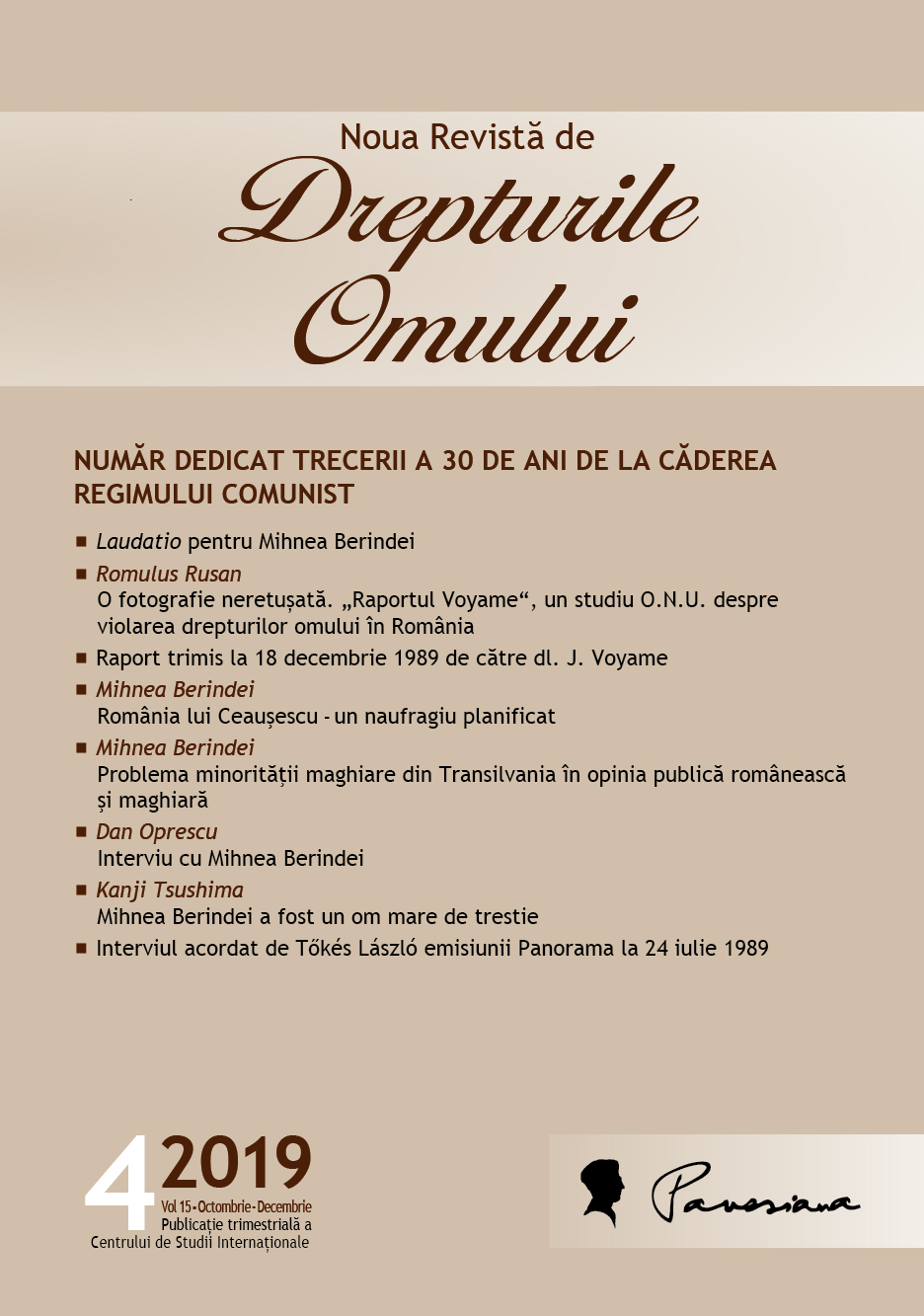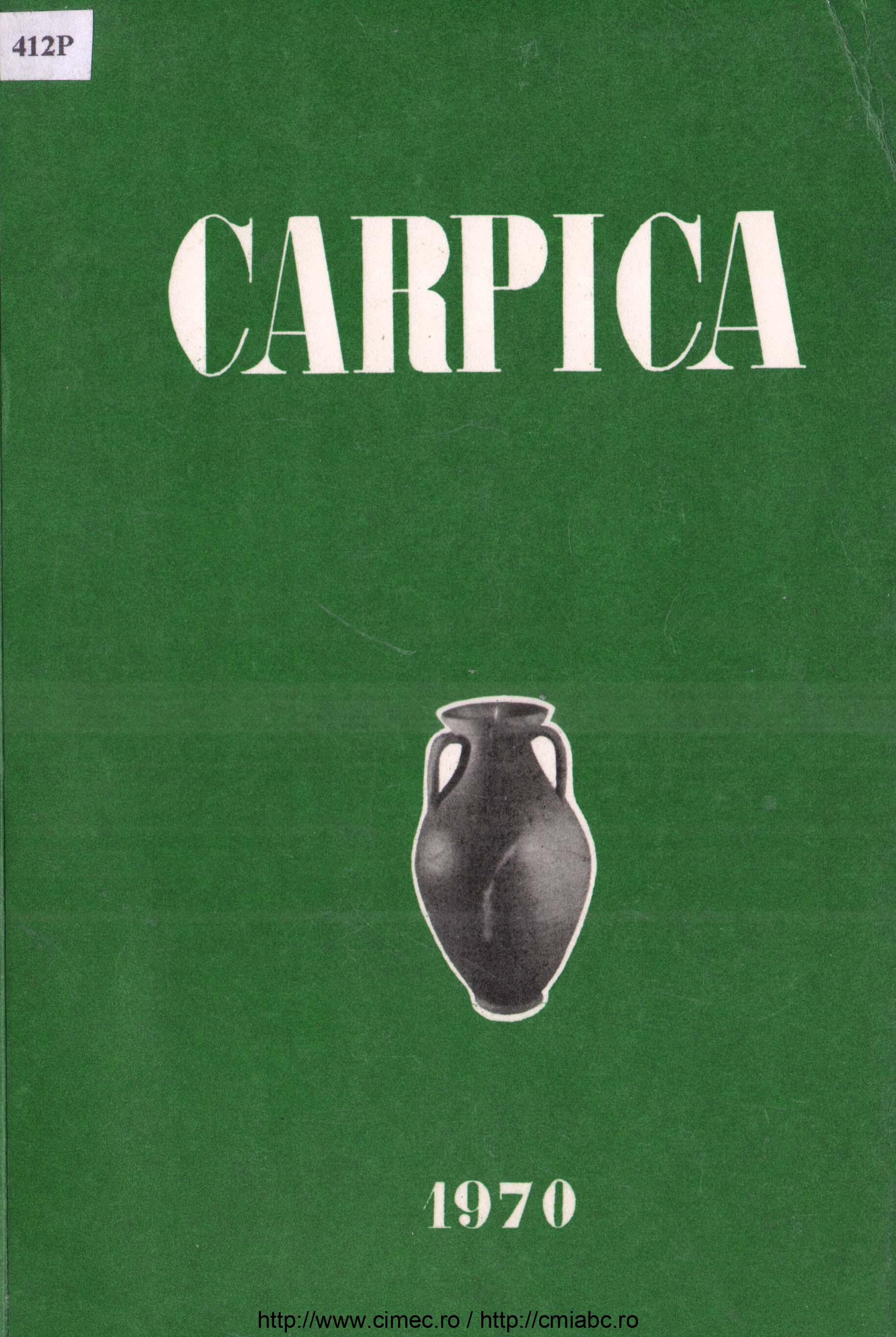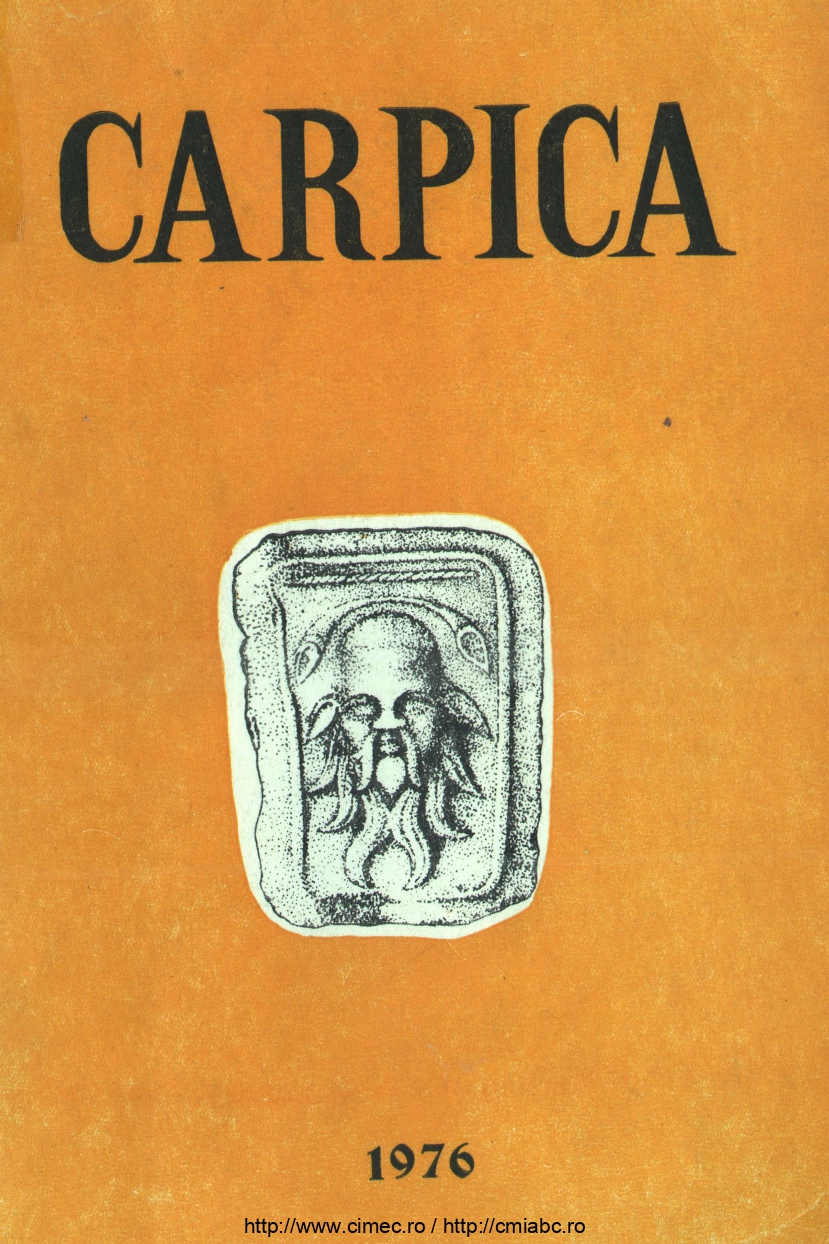
Mesaj trimis de Tőkés László participanților la evenimentul de demolare a cortinei de fier
Message sent by Tőkés László to the attendees to the Iron Curtain demolition event
More...We kindly inform you that, as long as the subject affiliation of our 300.000+ articles is in progress, you might get unsufficient or no results on your third level or second level search. In this case, please broaden your search criteria.

Message sent by Tőkés László to the attendees to the Iron Curtain demolition event
More...
Interview given by Tőkés László to the show Panorama on 24 July 1989
More...


The objective of the study is analysis of the collective memory of the inhabitants of Gorzów Wielkopolski – one of the two capital cities of the Lubusz Voivodship. Due to its border location, as well as an ethnically and culturally complex social structure, this city is an interesting case study of the formation of historical awareness on a local scale. The scientific problem involves the study of selected places of remembrance, historical policy of the local government and media discourse. The article is limited to the presentation of the most important places of memory, the analysis of the historical policy of the local government, and also examines the local discourse relating to historical figures and events of the past. Thanks to this, two foundations of collective memory of the contemporary inhabitants of Gorzów Wielkopolski have been determined. The first is a sense of continuity between the history of German Landsberg and the Polish Gorzów. The grassroots actions of regionalists and the systematic policies of the local government led to the „recovery” for the public sphere of this part of local history, which remained marginalized during the period of the Polish People’s Republic. The second foundation is the so-called eastern borderland history, which has been gaining importance in local collective memory for several years. The author puts forward the hypothesis that the case of Gorzów and the collective memory of its inhabitants shows the interpenetration of many levels: the private and public sphere, the grassroots activity and policies of the local government, the functioning of the media, or finally the local specificities and the activity of the central institutions, and in the case of this border region also of foreign institutions. For this purpose, the following methods were used, among others: historical method, descriptive method, analysis of discourse. The main part of the article is preceded by theoretical considerations on collective memory and its carriers and a characterization of the history of Gorzów, particular attention being paid to the groundbreaking year 1945 and its consequences for the contemporary city.
More...
It is a necessity–says the author of the article –to write a monograph of Vicovu de Sus and, due to the development of historical research, to discover new sources that could complement or reveal particular aspects of the life of this place. The name of the settlement probably comes from the Sicova stream, an affluent of the Suceava River. The first written mention of Vicovu de Sus dates from May 23, 1436, and it was found in a document from Suceava. In the present study, beginning with the occupation of the northern part of Moldavia b the Habsburg Empire, the author introduces the establishment of the stud farm in Vicovu de Sus, the social situation of the farmers in the Vicov area and the development of the town of Vicovu de Sus at the end of the 19th and at the beginning of the 20th century.
More...
The following historiographical approach intends to reconstruct the five years spent by the teacher Pamfil Cuciureanu from Bilca on the fronts of the First World War as a petty officer in the Austro-Hungarian army (1914–1917), the prison period in Italy (1917), the period when he joined the volunteer corps of the Romanian Legion (1918) and the return journey to his native Bukovina (November 1919). The main documentary support consists of his original notes, reunited in the manuscript From the book of life. Autobiography.
More...
After the Union of Bukovina with the Kingdom of Romania, Iancu Flondor served as Deputy Minister of the province, establishing his headquarters in Chernivtsi between December 1918 and April 1919. He was supervising nine Secretariats of Service (appointed for Interior, Justice, Finance, Public Education, Religious Affairs, Public Works, Industry, Commerce and Social Welfare, Agriculture, Domains and Food, Public Health). Iancu Flondor's activity has circumscribed a wide range of issues: economic recovery of Bucovina; organization of municipal elections; appointment in the administration of officials of Romanian origin; care and retirement pensions for war invalids; financial aid for those decorated in war; payment of war damage, requisition rates and remunerations both for officers and soldiers; effective leadership of the Religious Fund economy; proper supply of the urban and rural localities of Bukovina; lifting of siege and abolishing corporal punishment; implementation of the transitional agrarian reform; issues related to administration, justice, education, communications, transport, commerce, social protection, sanitation of cities and villages etc. The conflict with Ion Nistor, the Deputy Minister of Bukovina in Bucharest, linked to different views on how to integrate the province into Great Romania forced Flondor's resignation from office and his withdrawal from political life.
More...
The author presents in this second part of the study the life and political activity of the lawyer Pantelimon Chirilă, the leader of the P.N.Ţ. (National Peasants’ Party) County Organization in Rădăuți, between 1944 and 1952. Just like other leading members of the P.N.Ţ. County Organization, his main concern was the reorganization of the party and its successful participation in the 1946 election campaign. During this time, he and the democratic political organizations had to face the adversity of all administrative and political structures of the Bolsheviks, who aimed at establishing the communist regime in Romania. After winning with great sacrifices a seat in the Romanian Parliament and having been brutalized by the loyal communists from Rădăuţi, Pantelimon Chirilă had to hide in various places in Bucharest and Câmpulung-Muscel, in the houses of close relatives or politicians, keeping a permanent connection with the central management of the PNȚ. After the Tămădău episode in July 1947, when some leaders of the PNȚ were framed and accused of illegally trying to leave the country, the political situation of Pantelimon Chirilă got worse. The Security Service intensified the searches for him and his family members, building up an entire case in which a larger group of people was arrested, a group known as the “Pitești Lotˮ. Pantelimon Chirilă was tried and convicted together with his wife and the other relatives who supported him throughout the entire period until his arrest in January 1951, in Bucharest. He died under suspicious circumstances in the Văcăreşti Prison on August 18, 1952.
More...
In her speech delivered during the solemn session of the Romanian Academy, which was organized in Suceava on November 16, 2018, Alexandrina Cernov, an honorary member of the Romanian Academy, presented some ideas regarding the union of Bucovina with Romania. She focused on the situation of the province at the end of 1918, as well as on the role of some Bukovinian personalities in accomplishing the union, such as Sextil Puşcariu, Ion Nistor and Iancu Flondor.
More...
In his speech delivered during the solemn session of the Romanian Academy, which was organized in Suceava on November 16, 2018, Vasile Tărâțeanu, an honorary member of the Romanian Academy, presented some ideas regarding the union of Bukovina with Romania. He referred to the personality of the priest Dionisie Bejan, who was the initiator of several social, political, cultural and religious events in Bukovina and had an important role in the achievement of Bukovinaʾs union in 1918.
More...
The following study presents some aspects of primary and secondary school education in Bukovina based on several articles published by the first Romanian newspaper in this province of the Habsburg Monarchy. Emphasis is placed on the general situation of the schools in Bukovina from the perspective of the Austrian Ministry of Public Instruction project on the reorganization of the gymnasiums and of the teaching staff, as well as on the implementation of the educational measures aimed at introducing the German language as an official language. The editors of “Bucovina” Gazette, intellectuals trained in Enlightenment, were in favour of the introduction of measures to modernize the curriculum in accordance with the advances of time, as long as the education in Romanian would also be kept in schools, as considered essential for the preservation of the Romanian national spirit.
More...
The following article proposes a suggestive paradigm of the events that took place in Bukovina from its annexation in the spring of 1775 until its union with the Kingdom of Romania in the autumn of 1918. The author uses several documentary passages signed by Nicolae Iorga, Sextil Puşcariu, Ion Nistor, D. Marmeliuc, Sever Zotta and Iancu Flondor, attempting to show a significant connection between the decapitation of the Moldavian voivode Grigore Ghica III, in October 1777, by the Turks, and the removal of Iancu Flondor, in April 1919, by his opponents from the political scene of Bukovina after the union. The lines about Archaeus (aka the vital force of the universe) from a manuscript written by Mihai Eminescu are invoked to prove a constant in the Romanian history: the sacrifice of those who have dedicated their thoughts and deeds to the fulfilment of the ideal of truth, freedom and welfare in the life of the Romanian people.
More...
In the present paper, we propose a system by which non-specialists could appropriately understand the historical facts and the ways in which they were interpreted. The pillars on which our system is based are the notions of normality, objectivity and multiperspectivity. We believe that the non-specialist reader in history must realize an important aspect: the interpretation of the historical text should not be limited to content. Account must also be taken of the cultural, social, political, emotional and other factors that influenced the author of the text. To exemplify our proposal, we use the image of the gendarme general Eduard Fischer, controversially described in various political speeches, historical narratives and historiographical writings. At the end of the paper, we reproduce in our own translation the preface of the memoirs of general Eduard Fischer – published in Vienna in 1935, which we intend to translate entirely into Romanian and to propose them for publication – written by Emil Seeliger, an Austrian officer, who, after being in reserve, managed to make a stir in the Austrian press through reports and ideas which were considered unconventional or inadequate at the time.
More...
The beginning of the communist regime has brought major changes in the economic, social and political field, state interference is present in a large extent. Documents from archives in this case, from Orthodox parish archives of St. Spiridon Church in Comanesti provides an overview of the communist period, completing overall known details,so far. Besides the religious aspects are presented data about how the industry developed at the beginning of the communist era, the areas being mining, timber, oil refining.
More...
In the present article, the author cites new data on the development of Komrat in the interwar (Romanian) period based on archival sources. In particular, information on Komrat obtaining the status of a city on September 25, 1925 and the assignment of the coat of arms on September 20, 1932 are published for the first time. The author describes several measures that were taken by the local authorities for modernizing the city. In particular, it is indicated that a hydroelectric station, a power station, and a communal bath were built in the city; a city bank and a library were opened; a city park was set up. Such state institutions as the Mixed Court and the Industrial Inspectorate No. 11 – Komrat operated here, the last authority covered the districts of Tighina and Cahul. An important component of city development are its streets. This issue is given special attention. The author presents data on the activities of the mayoralty on their improvement (construction of sewers and planting trees along their perimeter). About 60 names, which were given to the streets of Komrat during the interwar period, are published for the first time. The author comes to the conclusion that during this period many of the city streets bore the names of the natives of the city, such as: the streets named after the priest Feodor Zlatov, the Slavist Peter Draganov, the large landowner Georgy Tsanko-Kylchik, and elected officials (in the Tsarist period) Konstantin Koycho and George Karanfil.
More...
The theme i approached, was and will continue to be an obligation of local patriotism, but also a moral responsibility of the educational institutions from Braşov over the past years regarding the development and evolution in our city of one of the most important industries in the last two centuries in the World – the aerospace industry. In this sense, we will try to synthesize and reveal the most important,often unfavorable moments (national political interests with corruptive origins or unfavorable international geopolitical connotations) regarding the emergence, development and evolution of the aerospace industry in Braşov in the three historical periods which have marked the evolution Romania after the First World War: the interwar capitalist period, the communist period and the capitalist period after December 1989.
More...
Articolul este un scurt istoric al așezării Buhuși până la înființarea Fabricii de postav.
More...
The paper presents concisely the main stages of the electrical power utilization in the region, the appearance and the development of the electrical power generation, transmission, distribution and utilization of the installations. In this paper are emphasized the achievements and the priorities of the region and country, regarding the mentioned field.
More...
Articolul prezintă câteva date despre satul Odobești (județul Bacău).
More...